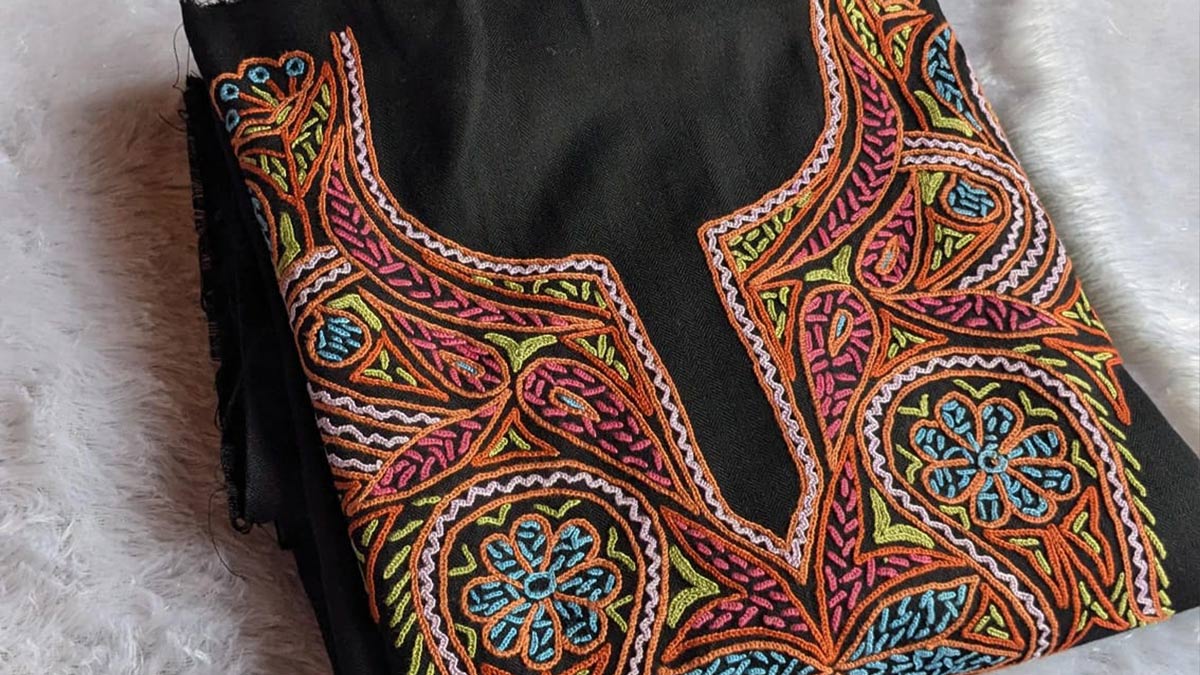Kashmiri suit dresses are not merely garments; they are embodiments of culture, artistry, and tradition that reflect the rich heritage of the Kashmir Valley. Known for their intricate designs and luxurious fabrics, these suits have captured the hearts of fashion enthusiasts around the world. From weddings to festive occasions, Kashmiri suits are synonymous with elegance and sophistication, making them a staple in every woman’s wardrobe.
Historical Background of Kashmiri Suits
The history of Kashmiri suits can be traced back to the Mughal era, when the region flourished under royal patronage. The Mughals were instrumental in popularizing intricate embroidery and textile arts, which greatly influenced the design of Kashmiri garments. Originally crafted for the elite, these suits were made from fine silk, wool, or Pashmina, showcasing elaborate patterns and stunning craftsmanship.
Over the centuries, Kashmiri artisans honed their skills, blending traditional techniques with contemporary designs. This evolution has led to a diverse range of styles, each reflecting the rich cultural tapestry of Kashmir. Today, Kashmiri suits are cherished not just for their beauty but also for the stories they tell of generations past.
Materials Used in Kashmiri Suit Dress
Kashmiri suits are crafted from a variety of luxurious fabrics that enhance their appeal. The most common materials include:
- Pashmina Wool: Known for its softness and warmth, Pashmina is a premium wool sourced from the Changthangi goat. Suits made from this fabric are incredibly lightweight yet warm, making them ideal for colder climates.
- Silk: Often used in combination with embroidery, silk adds a touch of opulence to Kashmiri suits. The rich texture and sheen of silk elevate the overall aesthetic of the garment.
- Cotton: In summer months, lightweight cotton suits are popular for their breathability and comfort. They often feature vibrant prints and embroideries, making them suitable for casual outings.
- Chanderi and Georgette: These lightweight fabrics are also commonly used in Kashmiri suits, providing a flowing drape that enhances the overall silhouette.
Types of Kashmiri Suits
Kashmiri suits come in a variety of styles and designs, catering to diverse tastes and occasions. Some popular types include:
1. Anarkali Suits
The Anarkali suit is characterized by its long, flowing silhouette that resembles a frock. Typically featuring intricate embroidery, these suits are perfect for formal events and weddings. The Anarkali style flatters all body types and offers a regal touch to any occasion.
2. Straight Cut Suits
Straight cut suits feature a more streamlined silhouette, often adorned with delicate embroidery along the neckline and sleeves. This style is ideal for casual and semi-formal occasions, providing comfort without compromising on elegance.
3. Palazzo Suits
Palazzo suits have gained immense popularity due to their modern, trendy appeal. The combination of a long tunic with wide-legged palazzo pants creates a fashionable yet comfortable look, making them suitable for both casual and festive occasions.
4. Churidar Suits
Churidar suits feature a long top paired with fitted churidar pants. This traditional style is versatile and can be dressed up or down, making it a favorite choice for everyday wear or special events.
Intricate Embroidery and Designs
The hallmark of Kashmiri suits is their intricate embroidery, which often includes stunning motifs and patterns that tell a story.
1. Sozni Embroidery
Sozni embroidery is a delicate hand-stitched technique that involves using a fine needle to create intricate floral and paisley designs. This meticulous art form requires immense skill and patience, resulting in breathtaking pieces that showcase the artisan’s craftsmanship.
2. Aari Work
Aari work is done using a hook-like needle that allows for elaborate designs to be stitched onto the fabric. This technique adds depth and texture, making the embroidery stand out.
3. Tilla Work
Tilla work incorporates gold or silver thread into the embroidery, giving the garments a luxurious finish. This form of embroidery is often used in wedding suits and festive attire, enhancing the overall aesthetic appeal.
Caring for Your Kashmiri Suit Dress
To maintain the beauty and longevity of your Kashmiri suit, proper care is essential. Here are some tips to ensure your garment stays in pristine condition:
- Gentle Washing: Hand wash your suit using cold water and a mild detergent. Avoid using harsh chemicals or bleach, as these can damage the fabric and embroidery.
- Drying: Lay the suit flat on a clean, dry surface to air dry. Avoid direct sunlight, which can cause colors to fade.
- Storing: When not in use, store your Kashmiri suit in a breathable cotton garment bag. Avoid hanging it for extended periods to prevent stretching.
Why Invest in a Kashmiri Suit?
Investing in a Kashmiri suit dress is not just a fashion statement; it is a way to celebrate and preserve the rich heritage of Kashmir. Each suit embodies the artistry of skilled artisans and the culture of the region. Additionally, the versatility of Kashmiri suits allows them to be worn across various occasions, making them a valuable addition to any wardrobe.
Furthermore, supporting local artisans by purchasing Kashmiri suits helps sustain traditional crafts and promotes the economic welfare of the community. By choosing authentic Kashmiri suits, you are not only investing in high-quality fashion but also contributing to the preservation of an age-old art form.
Conclusion
Kashmiri suits are a timeless blend of elegance, craftsmanship, and cultural significance. With their luxurious materials, intricate designs, and rich history, these garments have secured their place in the world of fashion. Whether for a wedding, festival, or everyday wear, a Kashmiri suit is a worthy investment that promises to bring beauty and sophistication to your wardrobe. As we embrace these exquisite pieces, we celebrate the artistry and heritage that they represent, ensuring that the legacy of Kashmiri craftsmanship endures for generations to come.
